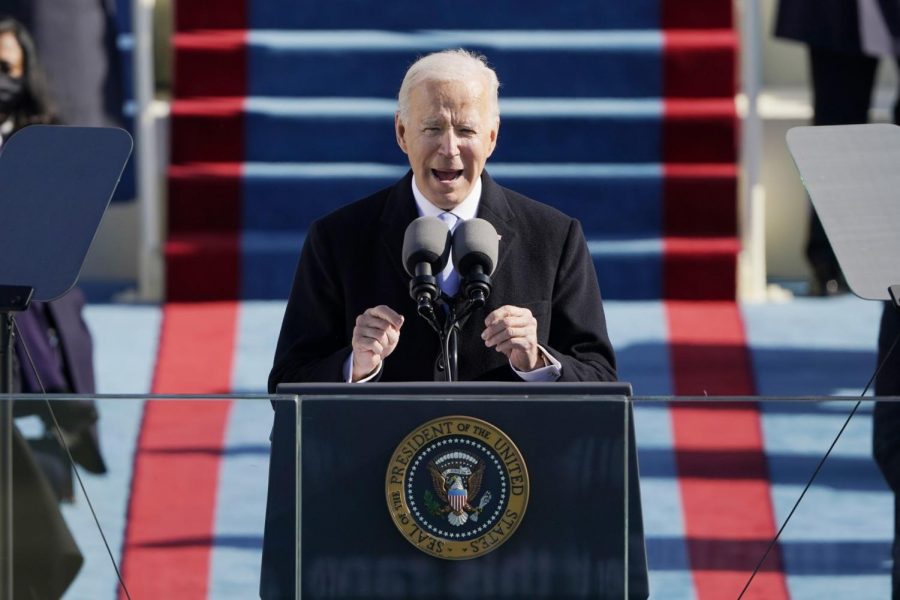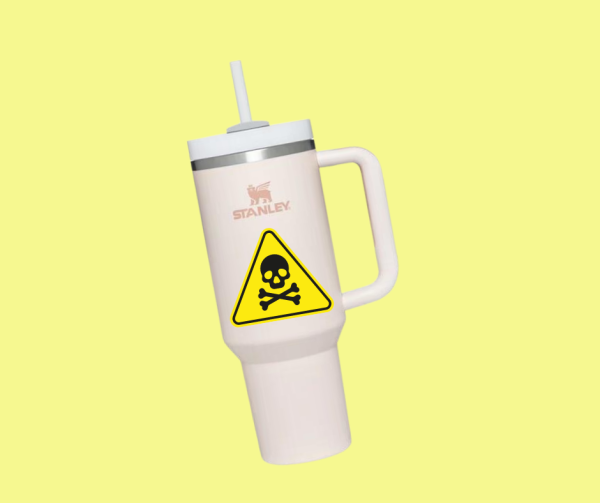President Biden is sworn into office; what happens next?
As the Biden Administration commences, what do they have in store for America?
January 22, 2021
President-elect Joseph Biden and Vice President-elect Kamala Harris, the first woman and African American of Asian descent to take office, were sworn in on Wednesday during a time of political, racial and health crisis.
The ceremony took place just two weeks after the domestic terrorists attacked the Capitol, which raised questions of moving the inauguration inside for safety issues. However the Biden/Harris administration hosted the inauguration on the steps, as planned, to a small audience of politicians, local representatives and over 20,000 US National Guard troops.
President Biden’s vision for America is outlined in his ambitious “Build Back Better” plan, which was described in detail on his transition site, and can now be found attached to the official White House page. Amid the numerous detailed plans, controlling the COVID pandemic, economic recovery for working families and affordable health care appear to be priorities.
In “The Biden Plan to Beat COVID-19,” President Biden goes into depth about a seven-point plan to get the country back to some normalcy. He stresses the importance of fixing the “Trump testing-and-tracing fiasco” by ensuring that Americans have access to regular, reliable and free testing. He then goes on to discuss a call on Congress to pass an emergency package for schools, while also mentioning his plan to solve the PPE crisis for good and provide clear and concise guidance for how to navigate through the pandemic. There is a noticeable emphasis on the importance of science and making “public health decisions [that] are informed by public health professionals,” a shift in direction from the previous administration.
His fifth point covers protecting the elderly and other high-risk Americans from the virus by equipping them with the knowledge of what precautions to take through creating a Nationwide Pandemic Dashboard. Implementing a nationwide mask mandate is covered in his seventh and final point where he will work alongside governors and mayors and urge the request “to step up in a time of crisis.”
The economy has undoubtedly taken a hit as a direct result of the COVID-19 virus. President Biden plans to “create millions of good-paying jobs and to give America’s working families the tools, choices and freedom they need to build back better.”
By providing further relief for working families, communities and small businesses, he hopes to extend COVID-19 crisis unemployment insurance, provide essential workers with aid in the event of layoffs, as well as provide a “comeback package” for small businesses and entrepreneurs. The president also plans to build a 21st-century caregiving and education workforce and build a clean energy future through modern infrastructure.
Affordable health care is last on President Biden’s list of priorities, starting with a promise to protect the Affordable Care Act from the “attacks the Trump Administration is firing.”
He outlines a four-point-plan to make the health care system less complex to navigate. President Biden goes on to discuss the importance of health care being for all, standing up to the abuse of power from drug companies and affordable health insurance. He plans to reverse the “all-out assault on a woman’s right to choose,” to improve “the supply of quality generics” and to partner with the healthcare workplace to improve health outcomes and lower costs.
While this transition into office has been anything but normal, Americans are eager to see what this administration has in store for the country, especially in a time where improvement is crucial for the growth of America. The theme of President Biden’s inauguration was unity, which comes at a time when tensions between political extremes are at their highest since the Civil War.
In President Biden’s first full day of office, he signed 17 executive orders, many of which were aimed at specifically overturning Trump policies and actions. His ambitious plan has already hit a snag, however, as the newly-split Senate has slowed to a halt while debating procedural rules.












